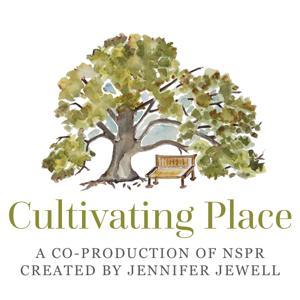Ep145 Organic? Treatment-Free? Chemical-Free? Natural Beekeeping Terms Explained in this ABJ article
Ever get confused by all the "natural beekeeping" terms floating around? In this episode I'm discussing an article (Oct 2023 ABJ) that breaks down three approaches that sound similar but are actually pretty different: organic beekeeping, treatment-free beekeeping, and chemical-free beekeeping. They're NOT interchangeable, and understanding the differences might change how you think about managing your hives.
Whether you're curious about going more natural with your bees or you just want to know what other beekeepers are talking about when they describe their approach. Handy for new beekeepers trying to figure out their philosophy and seasoned beeks who want to geek out on the fine print of management styles.
Article used with permission of American Bee Journal. Want to say thanks to ABJ for allowing these episodes from their archives? Grab a subscription and get access to years and years of bee magazines! One year digital only, with archive access: 21.00. One year print (with access to the archives)
Links I mentioned I'd share with everyone—It's Thanksgiving after all!
If for any reason these links don't work in your podcast app, you can view them in your web browser here: https://www.patreon.com/posts/144457183
Free At Home Beekeeping Series from Alabama Extension
Direct link to Julia Mahood's presentation on recordkeeping (available only til Dec 2 it says) on the Alabama Extension Facebook page.
SBGMI Virtual Winter Conference 2026
Certified Naturally Grown apiary standards in handbook form : Whether or not you get certified, this is a top notch collection of 'best practices' imo.
Ran across this just today! "Get 40% off a year long subscription to BEE CULTURE MAGAZINE" (limited time offer; this is their fine print below)
Valid on online orders only through https://simplecirc.com/subscribe/bee-culture Once on this page, click the 1-Year Print Only Option. Then click the 'Apply Promo Code' (BLUE line of text on the right hand side of screen.) Next, enter code SOC40 and click 'Apply code'. Valid 6PM EST November 26 through 11:59PM December 1, 2025. For U.S. subscriptions only. New subscriptions will begin with the February 2026 issue.
If you want to get links like those every time I release an episode, join as a patron!
You are warmly invited to become a Friend of Five Apple on Patreon to join the folks who make the podcasts possible, who keep the archives available and who keep it all advertising-free.
https://www.patreon.com/fiveapple
In addition to huge gratitude, you get:
Detailed show notes with links, tips, comments
Access to Patreon blog posts including tips and videos
Occasional bonus podcasts and early access episodes
Commenting on posts (and DMs) allows me to answer questions
Input on the podcast topics
Shout-outs on the show because I appreciate you!
If you can support the show with $3 a month or more, please sign up today: https://www.patreon.com/fiveapple
About Beekeeping at FiveApple: Leigh keeps bees in the Blue Ridge Mountains of North Carolina (gardening zone 6b). She cares for around a dozen hives in a rural Appalachian highland climate. Colonies are managed for bee health with active selection for vigor, genetic diversity and disease resistance, but without chemical treatments for fifteen years. The apiary is self-sustaining (not needing to buy/catch replacement bees since 2010) and produces honey and nucs most every year.




































